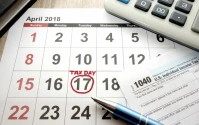Anatomy of a Privacy Panic: Deconstructing the Zcash October Surge
In the first two weeks of October 2025, Zcash (ZEC) executed a price move that was, by any statistical measure, an extreme outlier. The token rose from approximately $74 to a peak of $291, a move that saw Zcash reclaims $200 level after three years amid renewed interest in privacy coins. That’s a gain of nearly 4x—to be more exact, 393% from its October 1st low. For an asset that had been languishing for years, this wasn't just a rally; it was a violent repricing that liquidated shorts and sent traders scrambling for a thesis.
The narrative that formed was potent and timely. Chatter across social platforms, which I treat as a qualitative, anecdotal data set, quickly converged on a single theme: a flight to privacy. With a U.S. government shutdown delaying key economic data and President Trump reigniting trade-war fears with threats of 100% tariffs on China, the macro environment was rife with uncertainty. Capital, it was argued, was seeking a haven from surveillance and potential sanctions, a narrative that explained why Zcash Leads Privacy Coin Surge Amid Surveillance Fears. Pundits and investors like Naval Ravikant added fuel, framing Zcash not just as an asset, but as "insurance against Bitcoin."
It’s a clean, compelling story. But my analysis of market behavior suggests a more complex mechanism was at work. Narratives are the catalyst, not the cause. The underlying market structure is what determines the magnitude of the explosion.
A Stress Test and a Statistical Anomaly
The real test of this new valuation came on a Friday. Following two social media posts from President Trump, the entire crypto market went into a meltdown. It was one of the most severe liquidation events in recent history, with $20 billion wiped out in hours. Zcash was not immune, plummeting 45% from a high of $273 down to $150. You could almost feel the collective gasp as a month’s worth of gains evaporated in a single trading session.
And this is the part of the data that I find genuinely puzzling. In a market-wide panic, high-beta assets like ZEC are expected to fall harder and recover slower. Yet, Zcash did the opposite. While major assets like Ether were still down over 20% from their highs, ZEC staged a full recovery and shot to a new local peak of $291 the very next day.

I've looked at hundreds of market crashes, and a V-shaped recovery this sharp, especially in an altcoin during a period of macro fear, is highly unusual. It suggests something beyond broad market sentiment was at play. This wasn't just retail investors "buying the dip." A recovery this aggressive points to a market with thin liquidity on the order books, where a committed group of buyers can overwhelm panicked sellers and trigger a cascade of short liquidations (of which there were a reported $2 million). The price action looked less like a stable vote of confidence and more like a textbook short squeeze amplified by a compelling, fear-driven narrative.
The entire event felt like a feedback loop. Geopolitical fear created a demand for the privacy narrative. This initial demand pushed up the price in an illiquid market, which then attracted momentum traders. The subsequent crash shook out weak hands, but the rapid recovery, likely driven by a smaller, more dedicated pool of capital, created an even stronger perception of resilience. Was this a fundamental re-rating of privacy technology, or was it a masterclass in market psychology playing out in a low-float environment?
The Sobering Context of the Long View
While the surge dominated headlines, zooming out on the price chart provides a crucial, and sobering, dose of reality. Even at its $291 peak, Zcash remained more than 90% below its 2016 all-time high of $3,191. This is not a minor detail; it is the single most important piece of context.
The October rally was a massive wave, but it occurred in a very deep canyon. Institutional access has remained available (primarily through wrappers like the Grayscale Zcash Trust), which supporters cite as evidence of non-retail demand. However, the trading volumes within these products are a fraction of what would be required to justify a sustained move back toward old highs. The rally was spectacular, but it was a localized weather event, not a change in the global climate for the asset.
The question, then, is what to make of this divergence. Does the rally signal a long-term trend reversal, as some advocates claim? Or was it an ephemeral panic-and-squeeze, a ghost of past volatility? The data suggests the latter is more probable. The velocity of the move, the ferocity of the crash, and the anomalous speed of the recovery all point to market mechanics rather than a durable shift in fundamental valuation. The core value proposition of Zcash—opt-in digital cash—hasn't changed. What changed was the environment, which briefly made that proposition the most attractive story in town.
A Signal, Not a Revaluation
Ultimately, the Zcash surge of October 2025 was a fascinating case study in narrative-market fit. It demonstrated that in times of geopolitical stress, the demand for censorship-resistant and private assets is not theoretical. However, the price action itself was a distorted amplification of that demand. It was a signal, but not a sustainable revaluation. The event tells us less about the long-term value of Zcash and more about how a potent story, when injected into an illiquid market, can produce a statistical anomaly that looks, for a brief moment, like a revolution.









